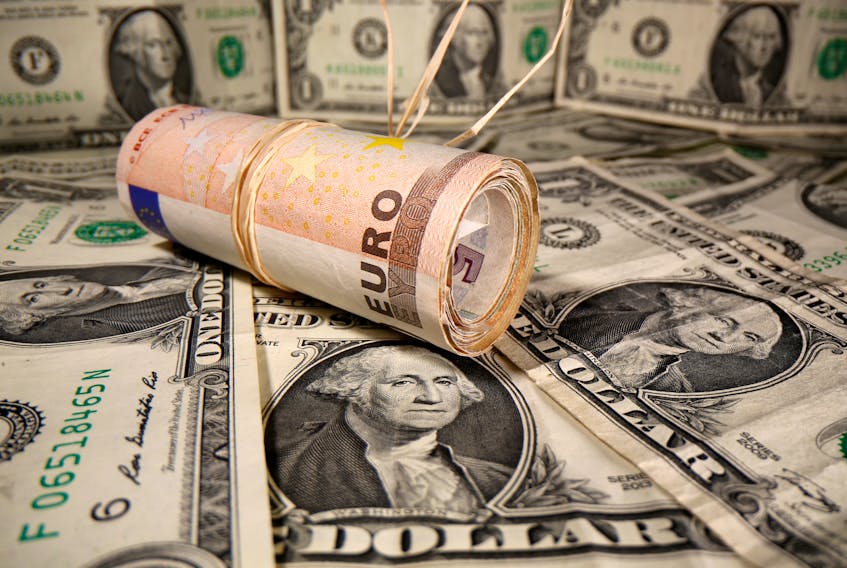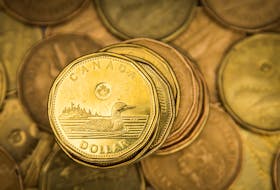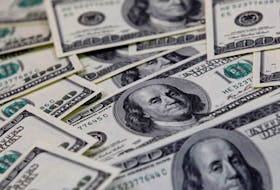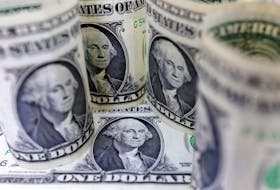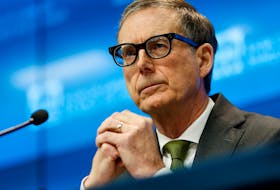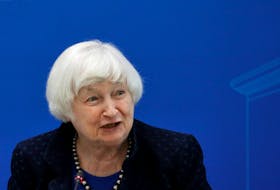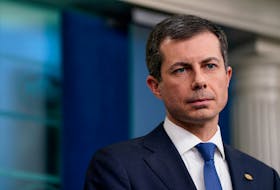By Gertrude Chavez-Dreyfuss and Suzanne Barlyn
NEW YORK (Reuters) - The U.S. dollar rose from 2-1/2-year lows on Friday, as European Union and British negotiators paused talks for a post-Brexit trade deal, weighing on sterling, though the greenback still posted its worst week in a month after investors shrugged off a weaker-than-expected U.S. employment report.
In late trading, the dollar index rose 0.1% to $90.725 ahead of the weekend, climbing from its lowest level since April 2018. On the week, the index was down 1.3%, its largest weekly loss since early November.
Britain and the European Union paused talks on Friday after failing to narrow differences sufficiently to reach a trade agreement, less than four weeks before Britain completes its Brexit journey out of the bloc.
The negotiators, Britain's David Frost and the EU's Michel Barnier, said they would brief their leaders to seek new impetus for the talks.
Upbeat announcements on COVID-19 vaccines have helped drive a rally in riskier currencies at the expense of the safe-haven dollar.
The euro and Swiss franc, in contrast, were headed for their best week in a month against the dollar.
The single European currency touched a 2-1/2-year high, while the Swiss franc rose to its highest in nearly six years.
Data showed that U.S. non-farm payrolls increased by 245,000 jobs last month after rising by 610,000 in October. That was the smallest gain since the jobs recovery started in May.
"The biggest development this afternoon has been what I'm telling clients is a 'fakeout-breakout' in pound sterling," said Toronto-based Erik Bregar, head of FX strategy for the Exchange Bank of Canada, referring to the possibility of a Brexit deal that is now on pause. "It makes me think about more downside afterwards."
The renewed possibility that Congress might forge another U.S. fiscal stimulus package and enthusiasm about progress on the development of COVID-19 vaccines remain key drivers in foreign exchange, strategists said.
The jobs data and surge in COVID-19 cases are unlikely to trigger a rush by the U.S. Federal Reserve to ramp up its bond-buying. Chicago Federal Reserve Bank President Charles Evans told reporters on Friday that the Fed could assess asset purchases in springtime, when there is more clarity on the economic outlook.
U.S. House of Representatives Speaker Nancy Pelosi said on Friday there was momentum behind talks on a coronavirus relief bill and that a bipartisan proposal could be the basis for relief negotiations. That should keep risk appetite higher.
The euro has been one of the biggest winners from recent dollar weakness, breaking decisively above $1.20 this week.
The single currency rose to $1.2177, its highest since April 2018, and was last down 0.2% at $1.2118.
Against the Swiss franc, the dollar recovered to trade slightly higher at 0.8910 franc, after earlier dropping to a nearly six-year low of 0.8886 franc. The greenback was last down .06% at 0.8903.
The dollar gained 0.3% against the yen to 104.15 yen.
Sterling fell 0.2% against the dollar to $1.3423 after trade talks for a post-Brexit trade deal with the European Union hit a snag ahead of the weekend.
Bitcoin pulled back to trade late on Friday at $18,906.54 after failing to break above $20,000 for the first time earlier this week.
(Reporting by Gertrude Chavez-Dreyfuss and Suzanne Barlyn; Editing by Andrew Heavens, Dan Grebler and Will Dunham)

